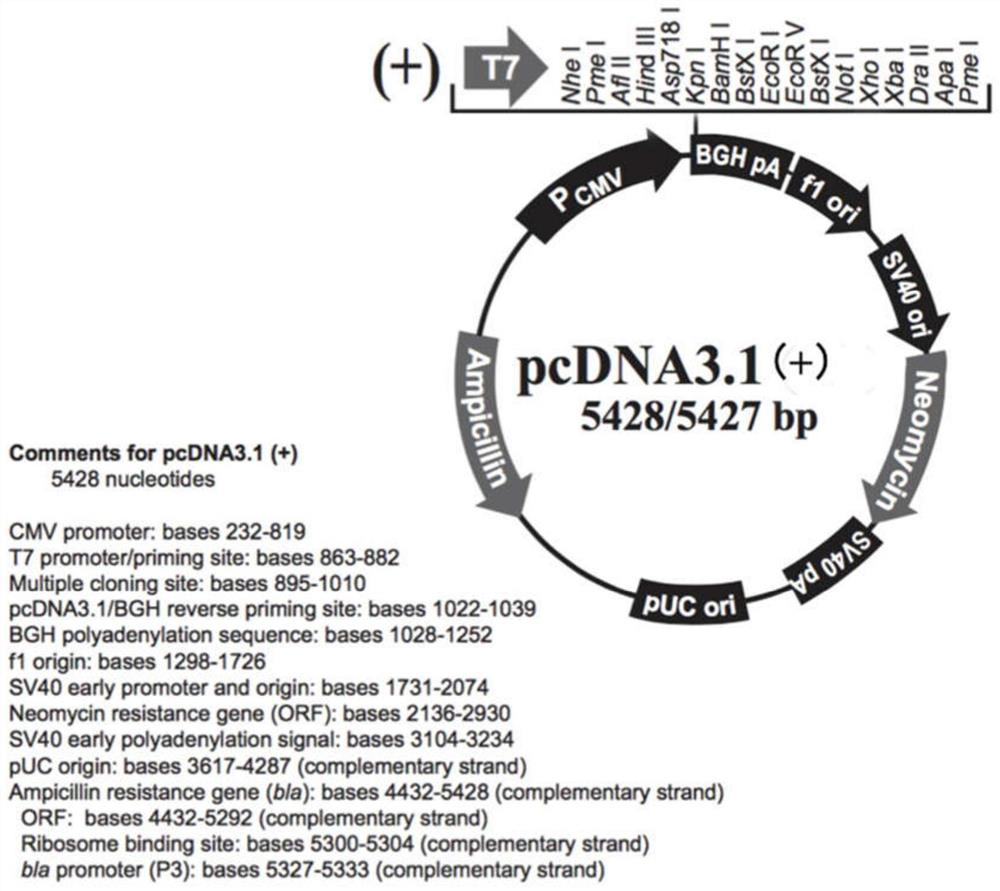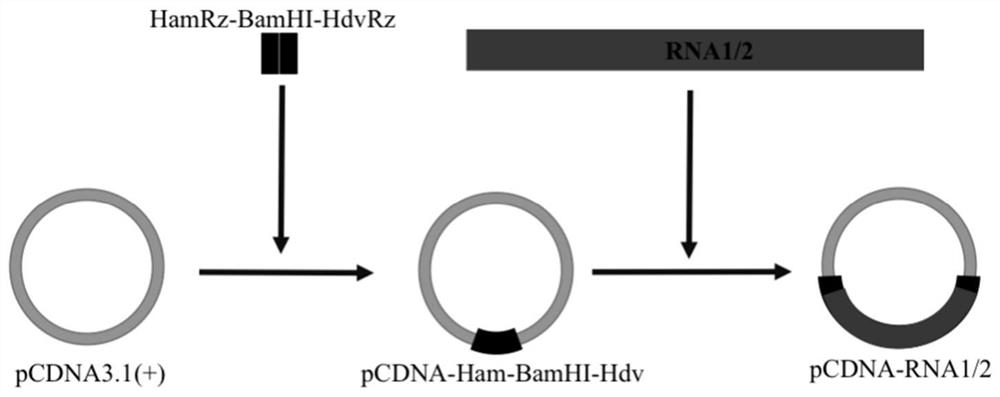A method for constructing a reverse genetic system of red-spotted grouper neuronecrosis virus
A technology of red-spotted grouper and nerve necrosis, applied in the field of aquatic animal virus genetic engineering, can solve the problem of low transfection efficiency and achieve the effect of convenient virus rescue
- Summary
- Abstract
- Description
- Claims
- Application Information
AI Technical Summary
Problems solved by technology
Method used
Image
Examples
Embodiment 1
[0024] Example 1 compares the replication effect of RGNNV in SSN-1 cells and GF-1 cells
[0025] GF-1 and SSN-1 cells were infected with RGNNV, and a control group (Mock) not infected with RGNNV was set at the same time. Cell pathological changes were observed and photographed 72 hours after infection. Discard the culture medium, wash twice with pre-cooled PBS, then add an appropriate amount of pre-cooled PBS to incubate the cells for 2-3 minutes, gently blow off the cells from the culture plate with a pipette gun, and collect them into a 1.5ml centrifuge tube. Centrifuge at 3,000 g for 10 min at 4°C. Pour off the supernatant, resuspend the cell pellet with 40-100 μl of pre-cooled PBS, add the corresponding volume of 5×SDS-PAGE loading buffer, and cook in boiling water for 10 minutes.
[0026] Clamp the glass plate for pouring the polyacrylamide gel, configure the separating gel according to the instructions, quickly pour about 5ml of the prepared separating gel into the gap ...
Embodiment 2
[0029] The construction of embodiment 2 RGNNV genome plasmid
[0030]The synthetic HamRz-BamHI-HdvRz fragment (with HindIII and XbaI restriction sites at both ends) was digested by HindIII and XbaI (purchased from Treasure Bioengineering (Dalian) Co., Ltd.), while pcDNA3.1(+) Plasmid ( figure 2 ) by HindIII and XbaI digestion, the digested fragment and pcDNA3.1 (+) plasmid were recovered, and connected with T4 DNA ligase (purchased from Treasure Bioengineering (Dalian) Co., Ltd.), the connection system was as follows:
[0031]
[0032] Water bath at 16°C overnight, transform DH5α-competent bacteria, culture at 37°C for 12-16 hours, pick bacteria for PCR identification of bacteria liquid, and send positive clones for sequencing (Wuhan Qingke Biotechnology Co., Ltd.), and the obtained recombinant plasmid was named pcDNA-Ham -BamHI-Hdv.
[0033] Table 1 Primer Sequence
[0034]
[0035] Infect SSN-1 cells with RGNNV, 24 hours after infection, discard the culture medium,...
Embodiment 3
[0045] Embodiment 3SSN-1 cell compares with 293T cell transfection efficiency
[0046] Prepare the SSN-1 cells and 293T cells for transfection 24 hours before transfection. Dilute 4 μg of the green fluorescent plasmid PEGFP-N1 into 400 μl of serum-free OPTI-MEM medium, add 12 μl of transfection reagent TransIntroTM ELTransfection Reagent (Beijing Quanshijin Biotechnology Co., Ltd.), blow gently for more than 10 times, and mix well , combined at room temperature for 30min. Wash 2 times with serum-free and antibiotic-free OPTI-MEM for SSN-1 cells or 293T cells that have been cultured for about 18-24 hours in a 6-well culture plate with 80%-90% abundance, uniform distribution, and good growth conditions. 200 μl of the mixture of plasmid and transfection reagent was added to each cell, and 800 μl of OPTI-MEM was added to cover the cells. SSN-1 cells in a 25 °C incubator, 293T cells at 37 °C, 5% CO 2 in the incubator. After adsorption for 6-8 hours, replace with 2 ml of MEM (SS...
PUM
 Login to View More
Login to View More Abstract
Description
Claims
Application Information
 Login to View More
Login to View More - R&D
- Intellectual Property
- Life Sciences
- Materials
- Tech Scout
- Unparalleled Data Quality
- Higher Quality Content
- 60% Fewer Hallucinations
Browse by: Latest US Patents, China's latest patents, Technical Efficacy Thesaurus, Application Domain, Technology Topic, Popular Technical Reports.
© 2025 PatSnap. All rights reserved.Legal|Privacy policy|Modern Slavery Act Transparency Statement|Sitemap|About US| Contact US: help@patsnap.com



